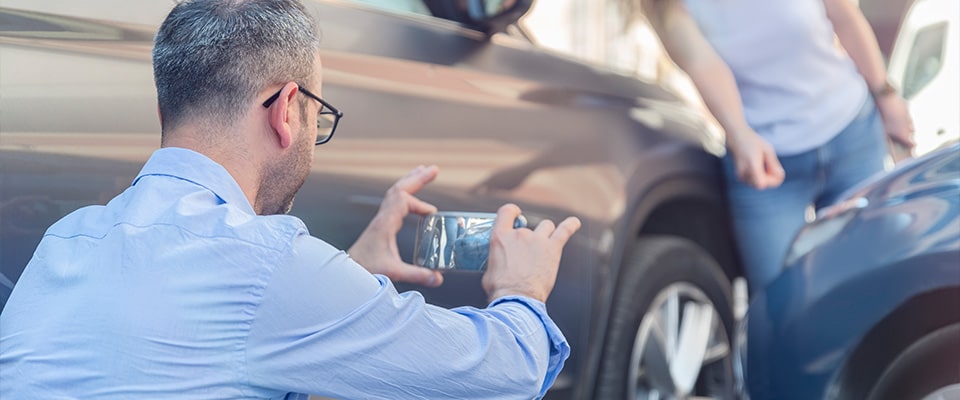Who Is At Fault in A Car Accident
Last updated Friday, October 18th, 2024

Knowing whether or not it’s your fault in an accident is necessary to claim for your injuries and damages. So let’s discuss this matter with some critical questions.
What Do I Do When I’ve Been Injured in an Accident That Wasn’t My Fault?
It depends on your state. For example, Kentucky’s a “no-fault” state. So let’s assume it happened in Kentucky.
- The first step is critical. Call the police, and get a police report.
- Then the second step is if you’re injured, get treated for your injuries. The police will offer to call an ambulance and take you to the hospital.
If you have any signs of injuries, you need to get examined immediately. Then notify your insurance agent that you were in an accident, that you weren’t at fault, and want to get your no-fault or PIP (Personal injury protection) benefits started.
Finally, talk to a lawyer. Lawyers don’t cost you any money. They work on a contingency.
How About a Scenario Where I May Have Caused the Accident?
In Kentucky, you can still recover if you’re at fault. However, you can only recover the percentage of no-fault.
- If you’re 90% at fault, you can still recover 10%.
- If you’re not at fault, you get a hundred percent.
It’s just on the percentage of those not at fault. In other states like Indiana, you cannot recover if you’re 51% or more.
How Do Fault and No-Fault States Work?
When a state says, they’re a no-fault state, that pertains to the medical bill coverage. So when you hear no-fault coverage, that’s for personal injury protection. It does not relate to the liability portion of who caused the accident.
Kentucky’s a no-fault state like Indiana and Ohio and doesn’t have PIP. They don’t consider themselves a no-fault state. Across the country, anybody living in a no-fault state only refers to a certain type of medical bill coverage for insurance.
Legally Speaking, Should I Say It’s My Fault, or I Caused the Accident?
Never say it’s your fault, and don’t admit to anything. You can explain what happened. You might think you are at fault, but you may not be.
Every driver has many duties they’re obligated to do, like maintaining a proper lookout and keeping a safe car-to-car distance.
If the other driver says it’s his fault, that’s okay, but you never mention it’s your fault.
Can Something Be Accidental and Still Have Somebody Who’s at Fault?
Yes. Believe it or not, you want it to be an accident and something other than an intentional act.
What Is the Difference Between an Accident Involving Negligence and an Intentional Act?
A lot of insurance companies have coverage for negligence.
Negligence is just like an accident, a mistake. You’re driving along, and you accidentally stop paying attention. You’re not doing it intentionally. Otherwise, it wouldn’t be covered.
For example, if I’m driving my car and see someone I don’t like and intentionally step on the accelerator to run over that person.
A clause says most insurance companies are liable for $25,000, even though you might have a million dollars in coverage because it’s an intentional act.
Negligence is a good thing because so many people make innocent mistakes, and they’re covered by it, and if they hit you, you also want the coverage.
What Do I Need To Demonstrate To Move Forward With a Car Accident Personal Injury Case?
In every case, there are two matters to resolve; liability and damages.
- You have to prove liability that someone is responsible for your injuries.
- You have to sustain injuries.
What Do I Need To Demonstrate To Move Forward With a Car Accident Personal Injury Case?
You’re responsible for your medicals up to the first $10,000. That’s why it’s your obligation to carry PIP or no-fault insurance.
Don’t pay your premiums if you are denied coverage or it’s hard to recover your medicals. It will make a claim a little more challenging.
How About in the Case of a Hit-and-Run Accident?
You can’t find who caused the damage or the injuries. Well, if you’re in a hit-and-run scenario, you can call the police and make a report.
Suppose you have an uninsured motorist; in most states, it’s mandatory to have uninsured motorist coverage because there’s a high probability that a person in an accident may not have insurance.
So in that scenario, we would use the uninsured portion of their insurance policy to file a claim.
If You Are Passing by the Scene of an Accident, Are You, as an Attorney, Allowed To Pull Over and Offer Your Services as a Lawyer?
No, you’re not allowed. That’s a direct solicitation. Most states have solicitation rules.
They have to contact you. So you can’t just come upon a scene of the accident and offer your services. That’d be an ethical violation.
Does That Fall Under the Category of Ambulance Chasing?
Well, it can’t help, that’s for sure. So that wouldn’t be a good sign.
The above is an extract from the ‘Ask The Hammer‘ podcast.











